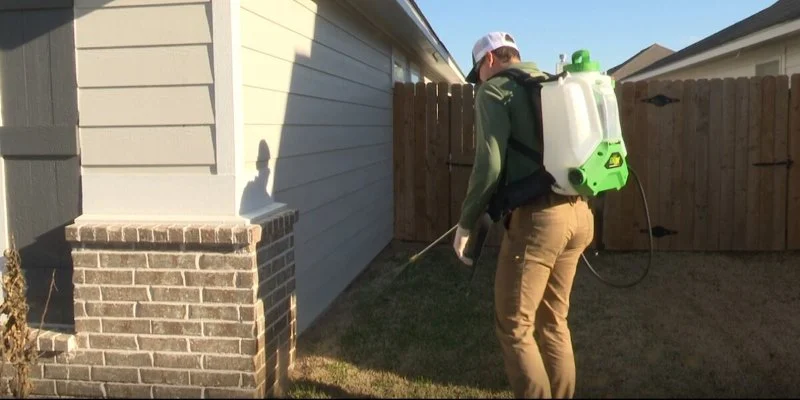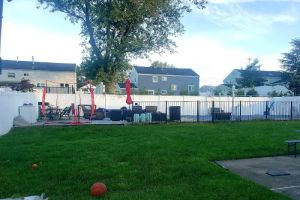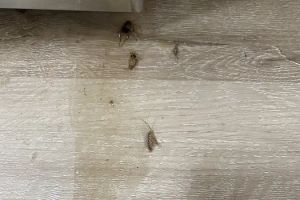
- 1. Why Pest Control Is Essential
- 2. First Steps to Take When You Spot a Pest
- 3. How to Identify Different Types of Pests
- 4. Preventing Pest Infestations in the Future
- 5. How PestControlHub Can Help
1. Why Pest Control Is Essential
Pest infestations are not just an annoyance—they can also cause significant damage to your home and pose health risks to you and your family. From termites chewing through wood to rodents contaminating food supplies, pests can lead to costly repairs and dangerous conditions if left unchecked.
Moreover, many pests, such as cockroaches, mosquitoes, and rodents, can carry harmful diseases. That's why it's essential to act quickly once you spot a pest in your home. Early detection and prompt action can prevent a full-blown infestation that is much harder to control.
2. First Steps to Take When You Spot a Pest
If you see a pest in your home, it's important not to panic. Follow these immediate steps to manage the situation and reduce the risk of an infestation:
2.1 Stay Calm and Identify the Pest
The first thing to do is stay calm. Panicking won’t help. Instead, try to identify the pest. Is it a flying insect, a rodent, or something else? Understanding the type of pest will help you take the most effective action. Some pests, like ants, may only require a small intervention, while others, like termites or bed bugs, may require professional help.
2.2 Contain the Area
If possible, contain the pest to one area to prevent it from spreading further throughout your home. For example, if you’ve spotted a rodent, try closing doors to other rooms and sealing cracks in walls to limit movement.
2.3 Inspect the Surrounding Areas
Look around the area where the pest was seen. Check for signs of nests, droppings, or other pests that might indicate a larger infestation. This can help you determine how severe the problem is and whether it requires immediate intervention.
2.4 Use Immediate Pest Control Solutions
Depending on the type of pest, you may want to use traps, sprays, or baits to remove the pest. For example, you can use a fly swatter for a flying insect or place rodent traps if you’ve spotted mice or rats. If the pest is difficult to handle, it’s a good idea to contact a pest control service.
3. How to Identify Different Types of Pests
Identifying the type of pest is crucial in determining the correct approach to handle the situation. Here's a guide to some common pests you may encounter:
3.1 Termites
Termites are often spotted in the spring and summer. They cause significant damage to wooden structures in your home. Signs of termites include small holes in wood, wood that sounds hollow when tapped, and mud tubes along walls. If you spot termites, it’s best to contact a professional immediately, as they can cause severe damage over time.
3.2 Rodents
Mice and rats are common pests that seek shelter in homes, especially in colder months. Signs of a rodent infestation include droppings, gnaw marks on furniture, and strange noises in the walls at night. Rodents can also spread diseases, so it’s crucial to act fast.
3.3 Cockroaches
Cockroaches are resilient pests that thrive in warm, moist environments. They’re often found in kitchens and bathrooms. Signs of a cockroach infestation include a musty smell, visible droppings, and seeing them scurry across floors or walls. Cockroaches can carry bacteria and allergens, making them a health risk.
3.4 Ants
Ants are another common pest that can invade your home, especially during warmer months. They’re often attracted to food sources. While ants are generally harmless, large colonies can be disruptive, so it's important to identify the species and use the appropriate control methods.
4. Preventing Pest Infestations in the Future
Once you’ve addressed the immediate pest issue, it’s time to think about prevention. Taking steps to safeguard your home can help you avoid future infestations. Here are some tips:
4.1 Seal Entry Points
Pests enter your home through cracks, gaps, and holes. Inspect your home regularly for any entry points and seal them with caulk or weatherstripping. Pay close attention to areas around windows, doors, and pipes.
4.2 Keep a Clean Home
Maintaining a clean home is one of the most effective ways to prevent pests. Regularly clean up food crumbs, wipe down countertops, and store food in airtight containers. Pests are attracted to food and water sources, so eliminating these will help keep them away.
4.3 Manage Trash and Waste
Pests are often attracted to trash, so ensure that your trash cans are sealed and emptied regularly. Store trash in containers with tight-fitting lids and keep them away from the house. Compost bins should be managed carefully to prevent attracting pests.
4.4 Regular Inspections
Conduct regular inspections of your home, especially in high-risk areas like basements, attics, and crawlspaces. Early detection can help you deal with problems before they become infestations.
5. How PestControlHub Can Help
At PestControlHub, we offer a wide range of pest control products and services to help you tackle infestations quickly and effectively. Whether you're looking for traps, baits, or professional pest control services, we have the resources you need to protect your home.
Visit PestControlHub today to find the best pest control solutions and expert advice tailored to your needs. Don’t wait for a pest problem to escalate—take action now to keep your home safe and pest-free!









 Wildlife Resolutions4.0 (443 reviews)
Wildlife Resolutions4.0 (443 reviews) Pest Marshals of Toledo5.0 (2 reviews)
Pest Marshals of Toledo5.0 (2 reviews) LS Rodent Proofing & Pest Control Service5.0 (4 reviews)
LS Rodent Proofing & Pest Control Service5.0 (4 reviews) Best Termite & Pest Control4.0 (16 reviews)
Best Termite & Pest Control4.0 (16 reviews) Varment Guard Wildlife Services5.0 (28 reviews)
Varment Guard Wildlife Services5.0 (28 reviews) Pestban Inc4.0 (394 reviews)
Pestban Inc4.0 (394 reviews) How to Use Monitors to Detect Pest Entry: A Comprehensive Guide
How to Use Monitors to Detect Pest Entry: A Comprehensive Guide How to Predict Which Pests Will Invade Next – Smart Pest Forecasting for the U.S.
How to Predict Which Pests Will Invade Next – Smart Pest Forecasting for the U.S. How to Conduct a Pest Risk Assessment at Home – Expert Guide
How to Conduct a Pest Risk Assessment at Home – Expert Guide How to Block Pest Entry Around Deck Joists: Effective Solutions
How to Block Pest Entry Around Deck Joists: Effective Solutions How to Safely Use Fumigation Methods: A Comprehensive Guide for Homeowners
How to Safely Use Fumigation Methods: A Comprehensive Guide for Homeowners Why Pests Are More Active After Rain: Understanding the Link Between Weather and Pest Behavior
Why Pests Are More Active After Rain: Understanding the Link Between Weather and Pest Behavior